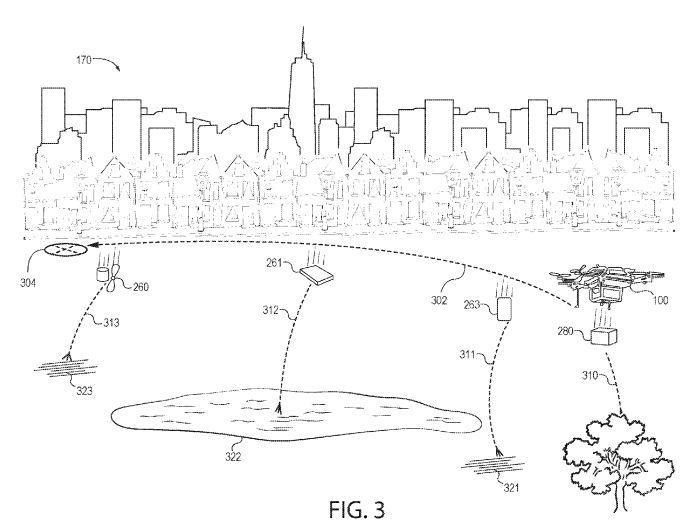Amazon Delivery Drones May Self-Destruct To Keep People Safe
Are you ready for a future where shipments are delivered via drones? How about a future where those delivery drones can self-destruct if the situation calls for it? A newly surfaced Amazon patent details delivery drones that could self-destruct if they are at risk of falling, the idea apparently being that a destroyed drone will land in several smaller, lighter pieces than one whole delivery drone, which could potentially hurt someone.
While we're still a long way off from delivery drones dotting the skies, multiple companies are investing in research and development on such UAVs, as well as the wider technology that could facilitate these types of deliveries. Amazon brought the idea to public attention; we've seen several related patents from the company since, this new one merely the latest in a long line of documents.

In this latest patent, which was filed on June 10, 2016, Amazon describes "directed fragmentation of an unmanned aerial vehile," which seems to mean a deliberate destruction of the drone if a disruption to its flight operations take place. This wouldn't be some spectacular burst of flames in the sky, though, at least not based on the patent's verbiage.
Rather, Amazon describes in the patent a technology called a "fragmentation controller" that creates a "fragmentation sequence for one or more of the [drone] components based on the flight path, the flight conditions, and terrain topology information." Plus other unstated factors.
Should something disrupt the drone's flight — perhaps a bird flying into it or an unexpectedly strong burst of wind — the controller could produce a "direct fragmentation of one or more components." By handling the flight disruption this way, the patent explains, the drone could experience a "controlled, directed fragmentation."
The patent goes on to explain that the controlled fragmentation would work by assigning certain drone components to be dropped in places as determined by various factors, such as the safety of the location, timing, the environment in question, potential legal and regulatory considerations, and more. What happens to your package during this shedding-of-components isn't elaborated on, though.
SOURCE: Gizmodo
